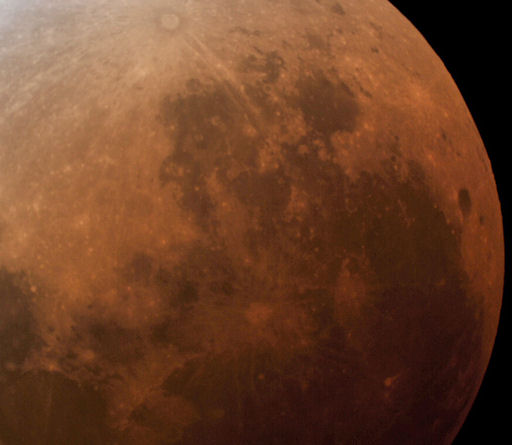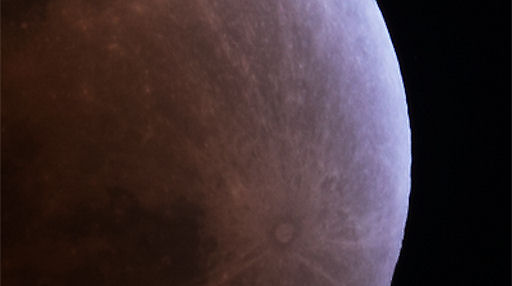Metallic photos of the sun by renowned photographer Greg Piepol bring together the best of art and science. Buy one or a whole set. They make a stellar gift. | | |
SOLAR WIND: Earth is entering a minor solar wind stream that could spark auroras around the Arctic Circle. High-latitude sky watchers should be alert for Northern Lights tonight. Aurora alerts: text, voice
TOTAL LUNAR ECLIPSE: Yesterday, sky watchers across the Pacific side of Earth witnessed a total eclipse of the Moon. During its transit through Earth's shadow, the Moon turned a bright copper color. The hue was meaningful to scientists who monitor lunar eclipses as part of their research on climate change. More on that below, but first regard this snapshot taken by James Barclay of Maidenwell, Queensland, Australia:

"The Moon looked like some alien planet hanging in a star-studded sky," says Barclay. "The excitement of those who witnessed this event will never be forgotten."
Dec. 10th Total Lunar Eclipse Gallery
Atmospheric scientist Richard Keen of the University of Colorado watched the event from Hawaii: "We had a fine warm morning for the eclipse here near Hale'iwa on Oahu'a North Shore. The eclipse was accompanied by the thunder of surf from the Banzai Pipeline, where later in the day surfers competed for the perfect ride," he says.
Keen wasn't just enjoying the view; he was also analyzing the event for scientific purposes. Lunar eclipses offer a unique way to assess the global dustiness of Earth's stratosphere. The scattering action of dust casts a red light into Earth's shadow. Lots of dust yields a deep red eclipse, while less dust produces a bright coppery hue.
The bright copper color of yesterday's eclipse suggests that the stratosphere is relatively clear. "My preliminary measurement of the brightness of the eclipse is magnitude -2.5 at mid-eclipse," says Keen. "It appears the clear stratospheric conditions of recent years is continuing."
This is important because the stratosphere affects climate; a clear stratosphere "lets the sunshine in" to warm the Earth below. At a 2008 SORCE conference Keen reported that "The lunar eclipse record indicates a clear stratosphere over the past decade, and that this has contributed about 0.2 degrees to recent warming."
The stratosphere has another effect on lunar eclipses. Note the soft blue colors in this picture from Shahrin Ahmad of Teluk Kemang, Malaysia:

This is the "turquoise fringe" often seen during total lunar eclipses. Keen explains: "Light passing through the upper stratosphere penetrates the ozone layer, which absorbs red light and actually makes the passing light ray bluer. This can be seen as a soft blue fringe around the red core of Earth's shadow."
More hints of turquoise may be found here, here and here.
Potentially Hazardous Asteroids (
PHAs) are space rocks larger than approximately 100m that can come closer to Earth than 0.05 AU. None of the known PHAs is on a collision course with our planet, although astronomers are finding
new ones all the time.
On December 11, 2011 there were 1272 potentially hazardous asteroids.
Notes: LD means "Lunar Distance." 1 LD = 384,401 km, the distance between Earth and the Moon. 1 LD also equals 0.00256 AU. MAG is the visual magnitude of the asteroid on the date of closest approach. | | The official U.S. government space weather bureau |
| | The first place to look for information about sundogs, pillars, rainbows and related phenomena. |
| | Researchers call it a "Hubble for the sun." SDO is the most advanced solar observatory ever. |
| | 3D views of the sun from NASA's Solar and Terrestrial Relations Observatory |
| | Realtime and archival images of the Sun from SOHO. |
| | from the NOAA Space Environment Center |
| | the underlying science of space weather |

